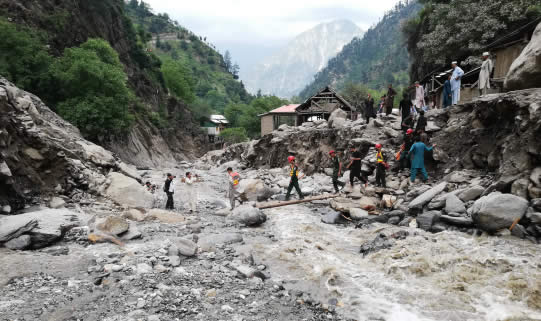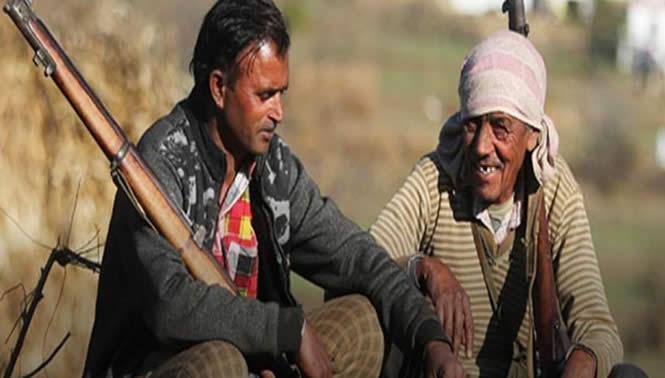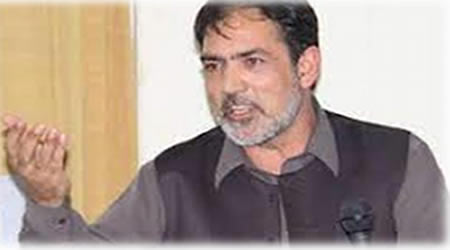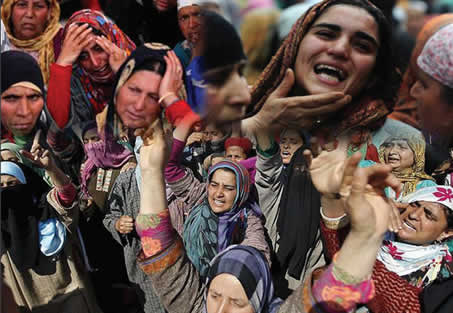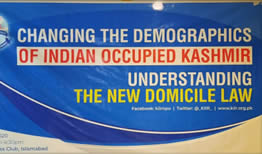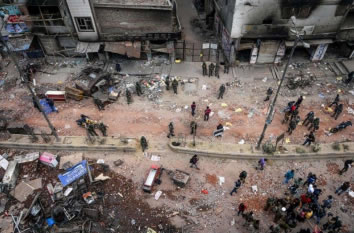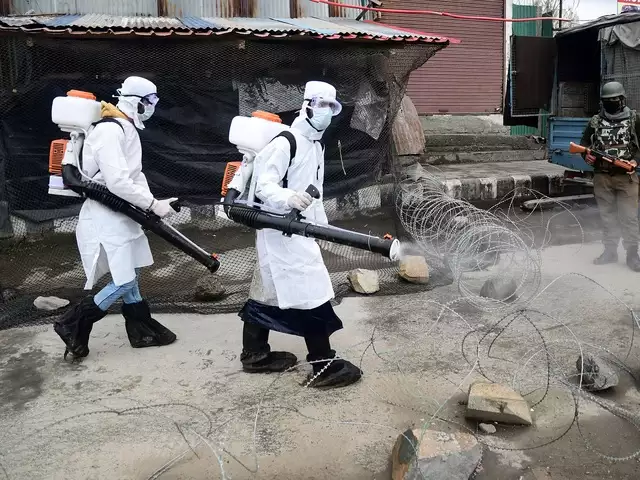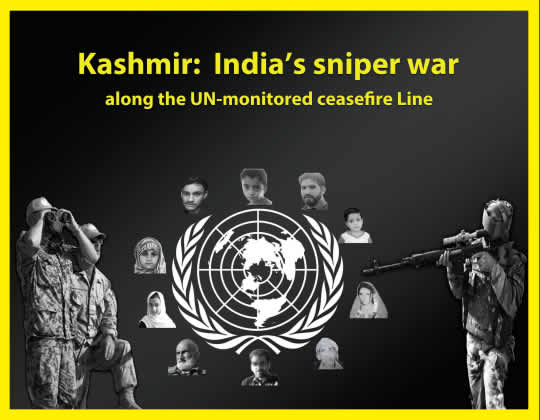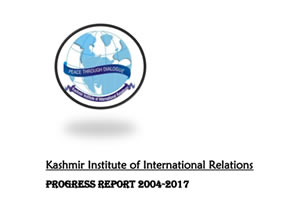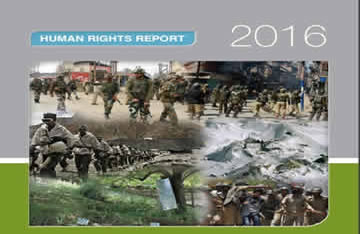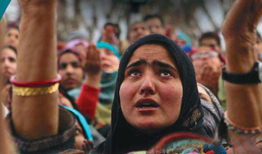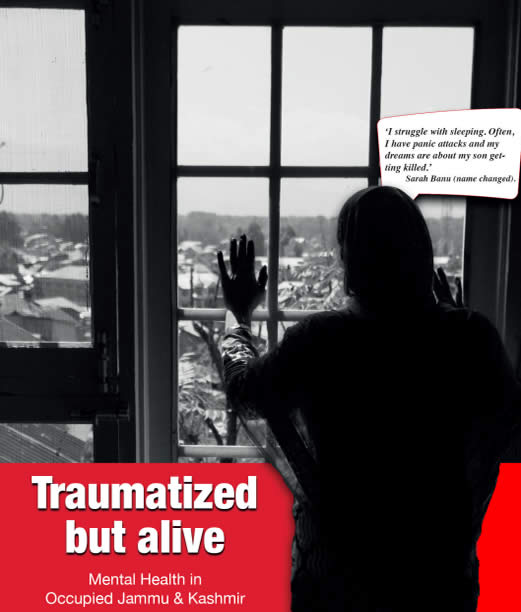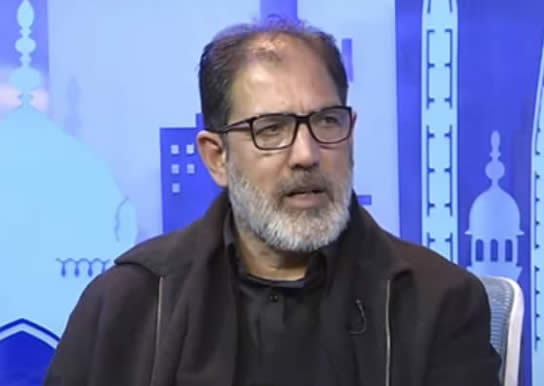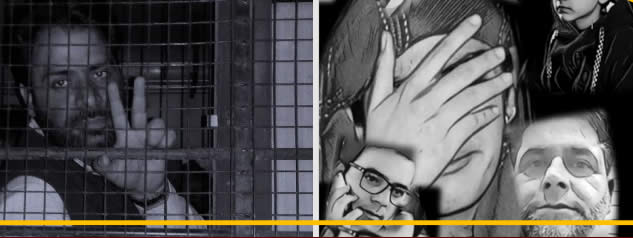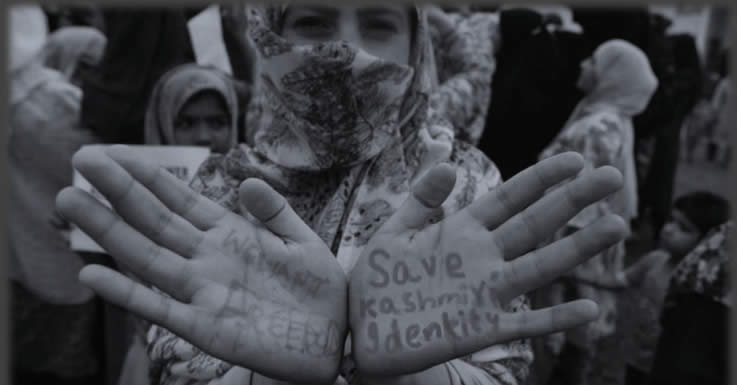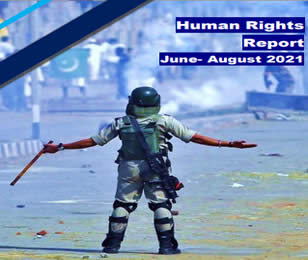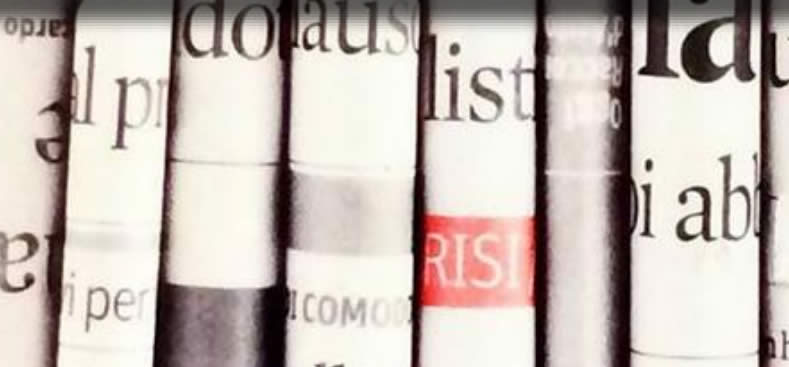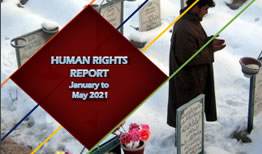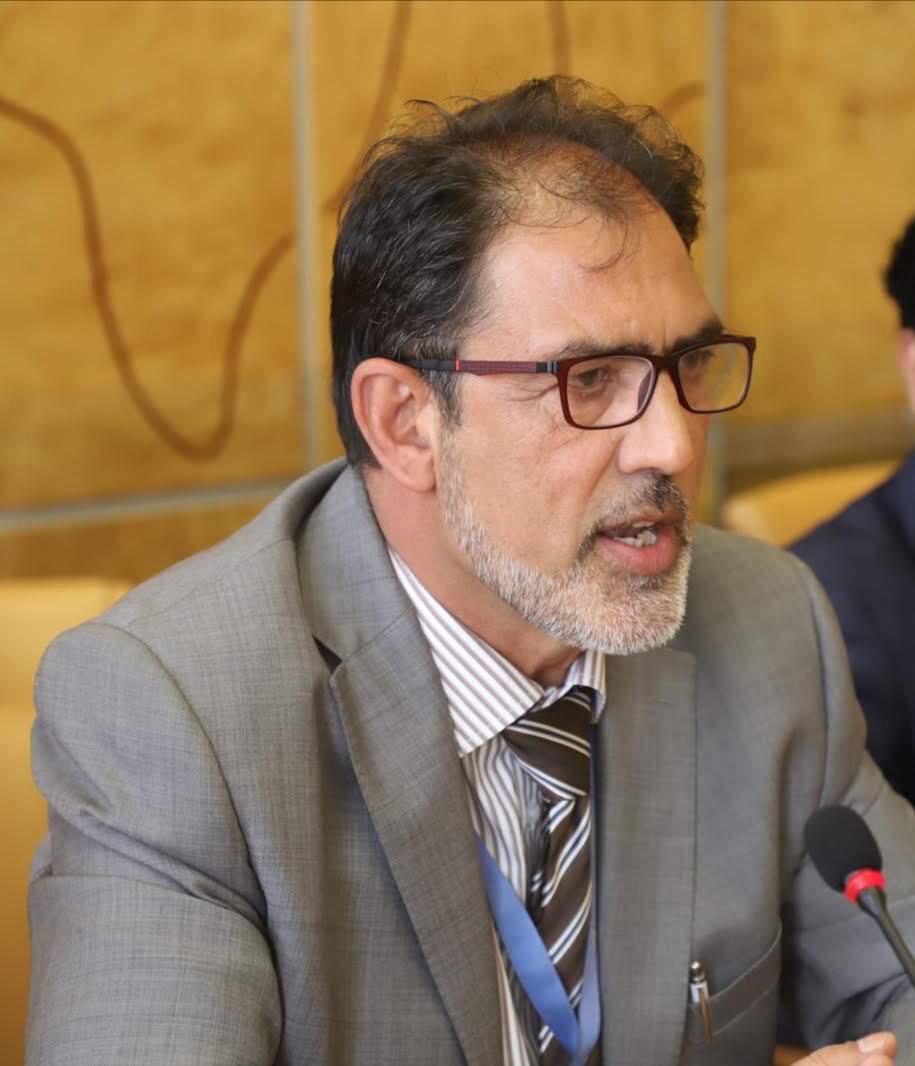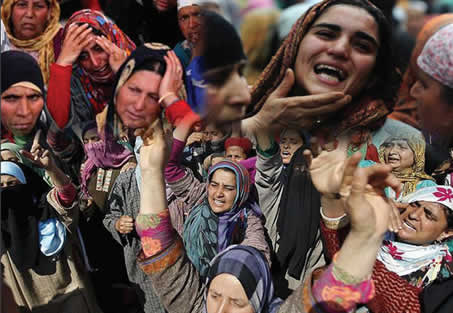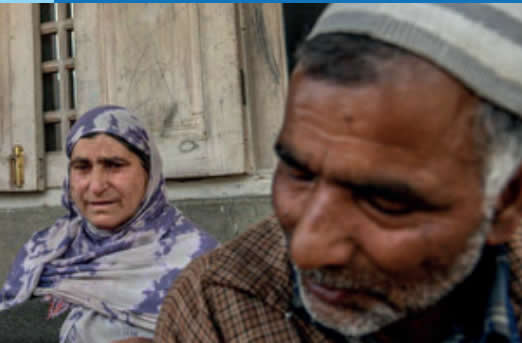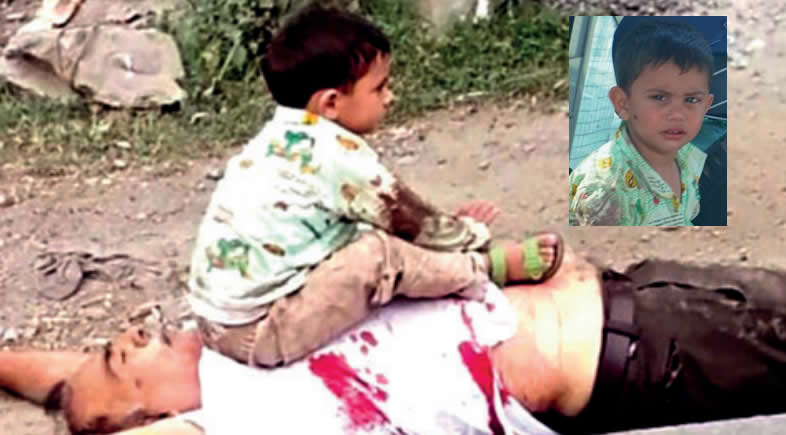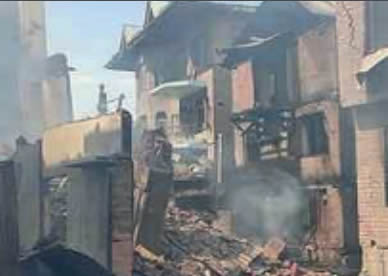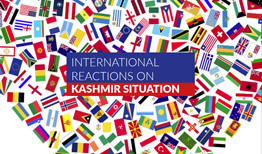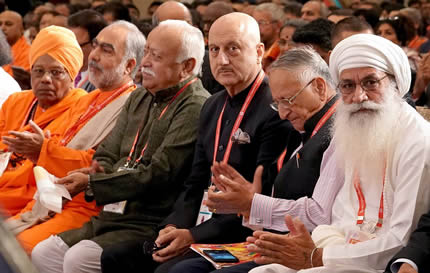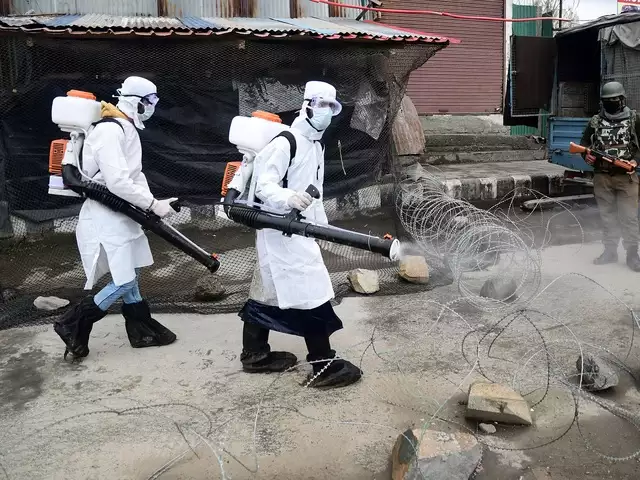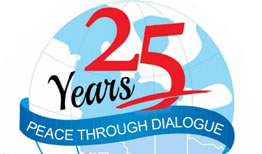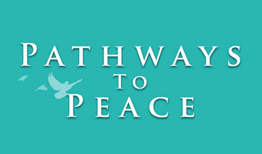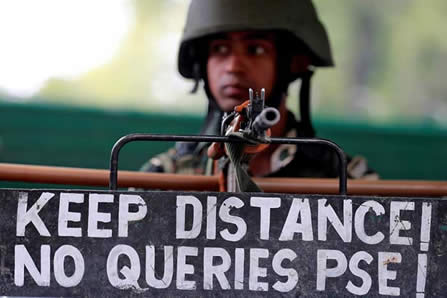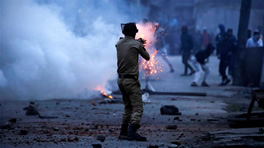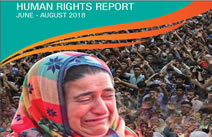NTERNATIONAL CONCERNS OVER HUMAN RIGHTS IN JAMMU AND KASHMIR
INTRODUCTION
This report provides a compiled overview of international responses to the human rights situation in Indian-occupied Jammu and Kashmir from June to August 2025. It brings together letters by international NGOs, a resolution by the Organisation of Islamic Cooperation (OIC), press releases by international NGOs, international reports, and international news stories from leading outlets. Across these months, the picture that emerges remains deeply concerning.
Despite official claims of normalcy, Kashmir continued to witness restrictions on civil liberties, communication controls, arbitrary detentions, and an entrenched security footprint. Letters and press releases from international NGOs documented these patterns and urged remedial action and accountability. The OIC resolution signaled sustained multilateral attention, while international reports assessed trends in civic space, due process, and freedom of expression. News coverage from outlets such as The Washington Post, The New York Times, The Guardian, and
Al Jazeera amplified on-the-ground realities, including rights violations and humanitarian stresses, challenging the prevailing narrative of peace and development. The report contrasts government claims with evidence gathered by rights bodies, multilateral instruments, and journalists, highlighting a widening gap between official narratives and documented facts. Given Kashmir’s status as a flashpoint between two nuclear-armed states, the implications extend beyond domestic governance to regional stability. The compilation does not represent the opinion of any one organization. Rather, it reflects the collective concerns of global civil society and international media.
It seeks to provide a factual, source-based record of the global response to the events of June, July & Aug 2025 in Jammu and Kashmir. The purpose of this report is to inform policymakers, researchers and human rights advocatesIt aims to contribute to an informed discussion about the way forward. The The voices curated here call for restraint, accountability, and meaningful inclusion, reminding all stakeholders that durable peace in Kashmir hinges on justice and respect for the will of its people.
INDIAINDIA: INTERNATIONAL HUMAN RIGHTS GROUPS REITERATE CALL FOR RELEASE OF DETAINED KASHMIRI HUMAN RIGHTS DEFENDER KHURRAM PARVEZ ON HIS BIRTHDAY
18 June 2025. On the eve of the 48th birthday of Khurram Parvez, a globally respected human rights defender from Indian-administered Kashmir, we, the undersigned organizations, renew our call for his immediate and unconditional release. Khurram has now spent over three and a half years in arbitrary detention under the Unlawful Activities (Prevention) Act (UAPA) – an Indian counter-terrorism law that has been widely condemned by experts and the United Nations (UN) for violating legal rules and norms, including by enabling prolonged pre-trial incarceration.. As Khurram marks another birthday behind bars, we, the undersigned organizations, call of government of India to immediately and unconditionally release Khurram Parvez, .
RESOLUTION ADOPTED BY OIC
RESOLUTION ADOPTED BY THE ORGANISATION OF ISLAMIC COOPERATION (OIC)
The Fifty-First Session of the Council of Foreign Ministers of the Organization of Islamic Cooperation (Under the Theme: The OIC in a Transforming World) held in Istanbul, Republic of Türkiye 21st – 22nd June 2025 (25th – 26th Dhul-Hijjah1446H); Reaffirming the principles and objectives of the Charter of the Organization of Islamic Cooperation (OIC) and the UN Charter regarding the sanctity of the universal realization of the right of peoples to self-determination and recalling the numerous unimplemented UN Security Council resolutions on Jammu and Kashmir dispute which declare that the final disposition of the state of Jammu and Kashmir will be made in accordance with the will of the people .
BACKSLIDING ON HUMAN RIGHTS IN CHINA, INDIA AND THE USA
The government in India continues to use repressive laws and the harassment of human rights defenders and independent journalists. This has resulted in numerous cases of arbitrary detention and a diminished civic space, notably in Jammu and Kashmir, as well as discrimination and violence against religious and other minority populations.
INDIA MUST HALT ARBITRARY DEMOLITIONS TARGETING MINORITIES AND MARGINALISED COMMUNITIES: UN EXPERTS
GENEVA – India must immediately put an end to its practice of arbitrary and punitive demolitions affecting low-income households, minorities and migrants, independent human rights experts* warned today. “Arbitrary demolitions carried out for purportedly punitive reasons are an aggravated form of human rights violation, and are especially egregious when they target or discriminate against minorities or marginalised communities,” the experts said. “Demolitions must never lead to homelessness and displacement, and those evicted must have access to adequate alternative housing, resettlement and compensation for any lost housing and property.
INDIA 2024 HUMAN RIGHTS REPORT
For the past 76 years, the people of Indian-administered Kashmir have been struggling for their U.N.- Civil society organizations, members of diaspora populations, academics, and journalists advocating, researching, or reporting on human rights reported experiencing threats, harassment, arbitrary surveillance, visa denials, and coercion. They attributed these acts to the government or individuals alleged to be connected to the government. They reported that some of their families, friends, or associates in India also experienced harassment and pressure from local authorities because of their human rights activities. They noted these activities created a chilling effect on their advocacy efforts and led to self-censorship, due to fear of reprisals against themselves and their families in India. Civil society activists noted the blocking of social media accounts in India, takedown requests, and proliferation of conspiracy theories as examples of transnational repression against diaspora activists working to advance human rights and religious freedom.
KASHMIR, COMMUNALISM, AND THE COLLAPSE OF CREDIBILITY
The Modi Government of India is in damage control. It was humiliated in the latest war against Pakistan. It has dispatched seven delegations, made up of MPs and retired diplomats, to more than 30 countries on an “outreach program” to “sensitize” other governments to present India’s perspective on terrorism and highlight Pakistan’s alleged role in sponsoring and enabling it. One such delegation to the US was headed by Congress MP Shashi Tharoor who claimed that “while the intent behind the Pahalgam terror attack was to divide people, it brought people together in India, irrespective of their religion or any other divide.
There was an extraordinary amount of togetherness cutting across religious and other divides that people have tried to provoke.” Tharoor is a seasoned politician who does not mind lying bigly to score a point. The facts are quite different inside India, let alone the Indian-administered Kashmir. As eyewitness reports also confirm, even before the Pahalgam attack by the alleged Muslim separatists, the hate directed against Muslims has been rising. These events have been chronicled by the Center for Study of Society and Secularism, Mumbai, and few other rights groups. Dr. Ram Puniyani writes, “Islamophobia is gripping the country with increasing intensity.” In Latur, a Muslim was labelled a Pakistani and beaten black and blue. Humiliated by this, he committed suicide. “Kashmiri students in a hostel in Uttarakhand were thrown out in the middle of the night and had to stay put in front of the Dehradun airport.” A report by the Association for Protection of Civil Rights (APCR) documented 184 hate crimes across India between April 22 and May 8, 2025, with 106 of these incidents allegedly triggered by the Pahalgam attack.
INDIA’S SELECTIVE CENSORSHIP
In early May, Maktoob Media’s newsroom was buzzing with urgency. Like many independent media outlets, its journalists were working around the clock to report on the escalating tensions between India and Pakistan. They had been sharing ground reports with their readers on X, formerly Twitter, for over two weeks. Then, silence. On May 8, readers told Maktoob’s founder-editor, Aslah Kayyalakkath, that the media outlet’s X account had been withheld in India. “We received no official notice or email. It was our readers who first noticed our X account had been withheld in India. That’s how we found out,” Kayyalakkath told The Diplomat.
Maktoob is an independent Indian media organization that mainly covers human rights and minority issues. However, Maktoob wasn’t alone. In a sweeping move justified under “national security” concerns, the Indian government directed social media platform X to block nearly 8,000 accounts—many belonging to independent journalists, regional media outlets, and activists. The order came in the aftermath of “Operation Sindoor,” which was launched by India against Pakistan and Pakistan-administered Kashmir in retaliation for the Pahalgam attack on April 22 that killed 26 tourists. In a post, X’s Global Government Affairs team said it had “received executive orders from the Indian government requiring X to block over 8,000 accounts in India,” including “demands to block access in India to accounts belonging to international news organizations and prominent X users.”
“In most cases,” the post said, “the Indian government has not specified which posts from an account have violated India’s local laws. For a significant number of accounts, we did not receive any evidence or justification to block the accounts.” Several of the blocked X accounts — such as those of Free Press
Kashmir, Maktoob Media, BBC Urdu, The Kashmiriyat, The Wire, and the accounts of some well-known journalists, including Muzamil Jaleel of The Indian Express and Anuradha Bhasin of The Kashmir Times — have since been restored. However, the government did not make public the list of banned X accounts nor did it specify the criteria it used to ban them.
THE MENTAL TOLL ON INDIA’S MINORITY-FOCUSED FREELANCE JOURNALISTS
Freelance journalists in India, particularly those reporting on marginalised communities and conflict zones like Kashmir, endure immense emotional and psychological strain, often without any institutional support. What are the hidden costs of reporting on violence, where telling the truth can come at a steep personal price? It has been four years since Meer Faisal began documenting hate crimes against minorities, particularly Muslims, in India. He was only 20 when he first stood amid the wreckage of burnt Muslim properties in the nation’s capital, New Delhi, where dozens had been killed in the violence. The charred remains of homes and the hollow criesof survivors left an indelible mark on his memory.
Overwhelmed by the scale of the brutality and his own sense of helplessness, Faisal returned home, but the nightmares never left him. “I started questioning everything, including how long I can keep doing this,” said Faisal, now 24. But he has barely paused in reporting on violence and human rights violations against Indian minorities since then. “It is tough and mentally exhausting work, but it’s also very important. So, I need to continue.” aisal recalls the haunting images that often linger long after he leaves scenes of violence: the screams of victims, the images of destruction, and the gut-wrenching reality of what he is documenting. “Whenever I report on hate crimes, I feel deeply disturbed mentally,” Faisal told Al Jazeera Journalism Review. “The cries, the voices, and all the horrifying details echo in my ears. These experiences lead to sleepless nights filled with nightmares.” For him and countless other journalists in India, reporting on hate crimes against minorities is a calling fraught with emotional and psychological peril.
In a country where violence against minorities has increased as the Hindu right- wing Bharatiya Janata Party (BJP) continues its rule for over a decade, journalists face severe risks in their work. For freelancers like Faisal, the pressures and intimidation are even greater. Unlike staff reporters with established media outlets, freelancers like him lack the support of a newsroom during times of crisis. They often have no access to legal counsel, mental health services, or financial safety nets that could help them navigate the harsh realities of their work. Precarious Position of Freelancers Ahmer Khan, a senior freelance journalist and two-time Emmy nominee, describes the isolation many freelancers face. “Freelancing means you are on your own,” Khan said.
CITIZEN JOURNALISM UNDER FIRE: GOVERNMENT OF JAMMU AND KASHMIR HAS YOUTUBERS AND ONLINE CONTENT CREATORS IN THEIR SIGHTS
The government of Jammu and Kashmir has issued an order targeting those it deems to be “impersonating journalists”, including content creators on YouTube, Facebook and Instagram. The order restricts speech vaguely defined as “provocative” or “false” content, and content creators reporting on political affairs in the region could be classified as “impersonating a journalist”. The order comes with significant legal threats such as fines, imprisonment and the confiscation of electronic devices, allowing for anyone deemed to be “disrupting public order” to face consequences. Threats to free speech in Jammu and Kashmir have been prevalent since a deadly terrorist attack in Indian-controlled Kashmir in April claimed 26 lives. Journalist Rakesh Sharma was physically assaulted while covering a protest in Jammu and Kashmir, and following the terrorist attack, the Indian government implemented widespread digital censorship on Pakistani and Muslim content on social media. With the new order, it will be even harder for residents of Jammu and Kashmir to stay informed.
ASIA DEMOCRACY CHRONICLES A LONG, LONG NIGHT IN THE VALLEY
Anxiety-induced sleep disorders are reportedly widespread in Kashmir. “Many have been taking sleeping pills for years, some since the turbulent 1980s. Exacerbating the situation for Kashmiris struggling with the psychological toll of constant threats of attackson both sides is the severe shortage of mental health professionals in the valley. “For a population this large and traumatized, there are far too few psychiatrists or psychologists. The lack of resources makes it harder for people to cope,” said Mir. According to a 2011 census, only about 41 psychiatrists were available for the nearly 12.5 million population in Jammu and Kashmir at the time. As these data have yet to be updated, mental health issues remain underreported in the region despite widespread trauma, as studies show.
Jammu and Kashmir’s estimated population today is 13.7 million. Kashmir has faced many uprisings, human rights violations, and violence for decades. Even after the Pahalgam attack, when Kashmir observed a complete shutdown, several protests and candle marches coupled with expressions of apology, were held across the region— they were still maligned. Many were assaulted in different states of India. There were calls for a boycott and an Israel-like solution for Kashmir. Kashmiris felt the need to express sorrow and distance themselves from the incident, fearing collective punishment and further crackdowns by the Indian stat
THE LAST CUSTODIAN: A KASHMIRI ARTISAN’S BATTLE TO SAVE A MUSICAL LEGACY
In the quiet, narrow lanes of Srinagar in Indian-administered Kashmir, a small, dimly lit workshop stands as one of the last holdouts of a vanishing craft. Inside the shop sits Ghulam Mohammed Zaz, who is widely believed to be the region’s last artisan who can make the santoor by hand. Santoor is a trapezoid-shaped stringed musical instrument, similar to a dulcimer, which is played with mallets. It is known for its crystalline bell-like tone and has been Kashmir’s musical signature for centuries. Mr Ghulam Mohammed belongs to a lineage of craftsmen who have been building string instruments in Kashmir for over seven generations. The Zaz family name has long been synonymous as the makers of the santoor, rabab, sarangi and sehtar.
But in recent years, the demand for handcrafted instruments has dwindled, replaced by machine-made versions that are cheaper and quicker to produce. At the same time, music tastes have changed, adding to the decline. “With hip hop, rap, and electronic music now dominating Kashmir’s soundscape, younger generations no longer connect with the depth or discipline of traditional music,” says Shabir Ahmad Mir, a music teacher. As a result, demand for the santoor has collapsed, leaving craftsmen without apprentices or a sustainable market, he adds.
NEWS IN INDIA IS BEING ERASED FROM THE INTERNET
When journalist Afraaz Hussain (not his real name) tried to revisit a series of investigative reports he had filed on human rights abuses in Indian-administered Kashmir, he was stunned to find the links broken and the pages wiped clean. Some of his most critical stories – on government surveillance, military misconduct and civil unrest – had vanished without explanation. “A lot of my work from the region is totally missing,” said Hussain, who asked that his name be changed to protect his identity. “Entire archives of newspapers before 2019 are missing. Stories critical of the government have disappeared.”
Apart from losing most of his investigative work, which he first noticed had vanished around two years ago, Hussain says he is facing police intimidation and a ban on his travel outside the country. Many reporters and editors based in India say media outlets are deliberately erasing or hiding their work amid what they describe as growing pressure from the Indian government to limit reporting critical of its policies. Stories that once documented surveillance, hate crimes and rights abuses are now vanishing from digital archives without explanation.
The government has also, in many cases, explicitly ordered the takedown of journalistic pieces that highlight alleged human rights abuses. For instance, last year, India’s Ministry of Information and Broadcasting directed a magazine to remove an article detailing accusations of torture and extrajudicial killing by the Indian Army in the Jammu region. This is true not only for the conflict-torn Indian-administered Kashmir and Jammu regions, even if it may have started there. Across India, a quiet purge of digital content is underway. News stories critical of the government are being erased – scrubbed from websites, replaced with 404 errors or removed after veiled legal threats. Journalists and activists call it a “digital vanishing act” that’s increasingly common in the country’s shrinking press freedom landscape. History student Owais said that the attempt to silence people in Kashmir is now “two- pronged”:
“One is reporting anyone who speaks for rights on social media platforms and another is constant police raids at residences just to intimidate not only the suspects but the general public at large in the valley.” Hanan, strolling back from the woods and towards his home, echoed Owais’s worries about the future of Kashmir. “I do not know what to do in these situations. I am not only concerned for my career, but now, for the last few years, my focus is more on the land I belong to, which I feel will be snatched away from me anytime by a single order of the government.
THE DEATH OF INDEPENDENT JOURNALISM IN KASHMIR IS BEING BUDGETED
Since the abrogation of Article 370 in August 2019, several newspapers have reported being excluded from official advertisement lists without notice or stated criteria. The Directorate of Information and Public Relations (DIPR), responsible for allocating ads, has not issued public explanations in many cases. For publications dependent on government revenue, these disruptions have led to layoffs, reduced print frequency, and cutbacks on reporting staff. One former editor at The Kashmir Reader said its newsroom has shrunk from 30 staff members in 2016 to just three today. According to Makhdoomi, Greater Kashmir and its Urdu sister publication Kashmir Uzma have lost readership because official notices, tenders, and job advertisements have shifted to other papers. “We’ve survived six years without government ads,” he said. “But it came at the cost of downsizing and no salary hikes since 2020.”
Former Chief Minister Mehbooba Mufti addressed the issue in May, posting on X that the suspension of advertisements had “thrown print journalism into complete disarray” and deepened the crisis in the local media ecosystem. Anuradha Bhasin, editor of Kashmir Times, described government advertising as “a tool to control the press”. She said publications refusing to conform to government expectations often lose ad revenue for years.
“Some papers receive generous shares, while others get little or none.” There are 164 registered publications in the Valley. The media researcher Khalid Bashir Gura said poor pay for reporters affects the quality and consistency of coverage. Some newspapers have reportedly adopted self-censorship to maintain access to government ads. On July 13, when Omar Abdullah and his Cabinet were placed under house arrest and barred from visiting the Martyrs’ Graveyard, newspapers responded unevenly. Greater Kashmir led with “Govt Locks Up Govt”, while The Kashmir Reader carried Abdullah’s quoteon the front page. Several other publications buried or ignored the story.
ARUNDHATI ROY WORKS AMONG DOZENS OF BOOKS BANNED IN INDIAN-ADMINISTERED KASHMIR
The 25 books named in the order range from historical narratives of the region by well-known academics, historians and journalists, both from Kashmir and abroad, to documentation of human rights atrocities committed in Kashmir. Since the 1990s, Indian-ruled Kashmir has been home to a militant separatist insurgency and a long-running campaign by Indian forces to crack down on militancy has led to accusations of widespread abuses carried out with impunity including enforced disappearances, tens of thousands of killings and a crushing of freedom of expression under draconian laws. The Indian government has denied the accusations.
Roy’s book Azadi, which includes essays on the thousands allegedly killed and disappeared in Kashmir by Indian forces in recent decades, and Independent Kashmir by the Australian political scientist Christopher Snedden, which explores the Kashmiri fight for independence, were among the banned books. Other titles the government ordered to be banned from publication and forfeited by all bookshops in the region included Colonizing Kashmir: State- building Under Indian Occupation by the US-based academic Hafsa Kanjwal and Contested Lands: Israel-Palestine, Kashmir, Bosnia, Cyprus and Sri Lanka by Sumantra Bose, a professor at the London School of Economics.
The government alleged that the content of the books “would deeply impact the psyche of youth by promoting a culture of grievance, victimhood and terrorist heroism”. The order accused the works of glorifying terrorists, distorting history and promoting violence and claimed they had “contributed to the radicalisation of youth in Jammu and Kashmir”. Authors named in the order expressed frustration attheir works being censored in the very region they addressed. Angana Chatterji, a scholar at University of California, Berkeley, who co- authored the now-banned Kashmir: The Case for Freedom, said the order “underscores the state’s intent to criminalise scholarship and render it seditious”. “The symbolic and material impact of this ban stands to be extensive,” said Chatterji. “It restimulates psychological operations to terrify and isolate Kashmiris, and silence their pain and resistance.
KASHMIR BOOK BAN SPARKS OUTCRY AS INDIA CLAIMS LITERATURE ‘GLORIFIES TERRORISM’
SRINAGAR, KASHMIR - The Indian government has sparked outrage after banning 25 books in Indian-controlled Kashmir, accusing them of spreading “false narratives” and inciting “secessionism” in the disputed region. The Home Department in New Delhi claimed that the banned works “glorify terrorism, misguide youth, and encourage violence against the Indian state.” Among the blacklisted titles are internationally acclaimed works, including Booker Prize winner Arundhati Roy’s Azadi: Freedom, Fascism, Fiction, historian A G Noorani’s The Kashmir Dispute 1947-2012, and academic Hafsa Kanjwal’s Colonizing Kashmir: State-building Under Indian Occupation.
Officials allege the books could “deeply impact the psyche of youth by fostering grievance, victimhood, and terrorist heroism.” ‘Colonial Erasure in Action’: Authors Condemn Ban as Attack on Kashmiri Identity Hafsa Kanjwal, a US-based Kashmiri academic, slammed the ban as proof of India’s “deep insecurity” over its control of the territory. “On one hand, the state celebrates literature with festivals; on the other, it censors the histories and voices of Kashmiris,” Kanjwal said, describing the move as part of a larger “settler colonial” strategy -erasing memory, history, and identity, then replacing them with state-approved narratives. Earlier this year, authorities also confiscated over 600 books by influential Islamic scholar Syed Abul A’la Maududi, heightening concerns of religious and ideological censorship.
From Autonomy to Authoritarianism: Post-2019 Crackdown Intensifies Critics say this is the latest in a series of crackdowns following Prime Minister Narendra Modi’s 2019 decision to revoke Kashmir’s semi- autonomous status. Anuradha Bhasin, whose book A Dismantled State: The Untold Story of Kashmir After Article 370 is among those banned, joins other writers in warning that the move is part of an authoritarian trend. Mona Bhan, co-editor of the banned Resisting Occupation in Kashmir, called the ban “a hallmark of fascist regimes that fear truth,” accusing India of trying to “suppress critical thinking and credible scholarship” while imposing its own version of history.
A Disputed Land, a Silenced Voice
Kashmir remains one of the world’s most militarised zones, claimedin full by both India and Pakistan. A decades-long insurgency in the Indian-administered region has left tens of thousands dead, with locals widely viewing it as a legitimate freedom struggle.The United Nations continues to recognise Kashmir as a disputed territory, with multiple resolutions affirming the right of Kashmiris to self- determination through a plebiscite - a promise yet to be fulfilled
‘ATTACK ON PEOPLE’S MEMORY’: KASHMIR’S BOOK BAN SPARKS NEW CENSORSHIP FEARS
Hafsa Kanjwal’s book on Kashmir has just been banned, but it’s the irony of the moment that strikes her the most. This week, authorities in India-administered Kashmir proscribed 25 books authored by acclaimed scholars, writers and journalists. The banned books include Kanjwal’s Colonizing Kashmir: State-Building under Indian Occupation. But even as the ban was followed by police raids on several bookstores in the region’s biggest city, Srinagar, during which they seized books on the blacklist, Indian officials are holding a book festival in the city on the banks of Dal Lake. “Nothing is surprising about this ban, which comes at a moment when the level of censorship and surveillance in Kashmir since 2019 has reached absurd heights,” Kanjwal told Al Jazeera, referring to India’s crackdown on the region since it revoked Kashmir’s semiautonomous status six years ago.
“It is, of course, even more absurd that this ban comes at a time when the Indian army is simultaneously promoting book reading and literature through a state-sponsored Chinar Book Festival.” Yet even with Kashmir’s long history of facing censorship, the book bans represent to many critics a particularly sweeping attempt by New Delhi to assert control over academia in the disputed region. ‘Misguiding youth’ The 25 books banned by the government offer a detailed overview of the events surrounding the Partition of India and the reasons why Kashmir became such an intransigent territorial dispute to begin with. They include writings like Azadi by Booker Prize winner Arundhati Roy, Human Rights Violations in Kashmir by Piotr Balcerowicz and Agnieszka Kuszewska, Kashmiris’ Fight for Freedom by Mohd Yusaf Saraf, Kashmir Politics and Plebiscite by Abdul Gockhami Jabbar and Do You Remember Kunan Poshpora? by Essar Batool. These are books that directly speak to rights abuses and massacres in Kashmir and promises broken by the Indian state.
BOOK BLACKLIST IN KASHMIR AIMS TO MUZZLE CRITICISM OF INDIA
One book tells the story of Kashmiri women waging a decades- long search for their disappeared loved ones. Another examines how history, politics and local events shaped one of South Asia’s longest conflicts. A third tells the story of democracy under threat in Kashmir, by a journalist who saw it unravel. These and 22 other books have been banned by authorities in the Indian-administered part of Kashmir, the disputed borderland that India and Pakistan have fought over for more than three-quarters of a century. In announcing the list on Tuesday, the federally appointed government of the Indian- administered region called the works “secessionist literature” that were “disguised as historical or political commentary” but promoted a “culture of grievance, victimhood and terrorist heroism.” The order makes it illegal to circulate, possess or access the texts in the valley, under threat of years in prison. How well it can be enforced is unclear, however, given that many of the works can be accessed online or bought outside Kashmir.
Arundhati Roy, center, in New Delhi in 2019. Ms. Roy, a Booker Prize- winning novelist, is among the authors whose works are banned under the new order. “They’re challenging the state’s narrative,” said Ather Zia, a Kashmiri who wrote or co-wrote two of the bannedbooks. “They are questioning some of the very important things the world buys when someone says India is a democracy,” Ms. Zia added. The ban came at a symbolic time. It was announced on the sixth anniversary of the major constitutional change that stripped Jammu and Kashmir, a Muslim-majority region, of its special autonomous status. Since then, poets have hedged their verses, journalists have been jailed, newspapers shut down and archives erased. A deadly terrorist attack in Kashmir in April fueled the repression.
Afterward, security forces detained thousands of people and blew up the homes of people accused of having ties to militants, actions that resembled the collective punishment the authorities have carried out in the past. “Even in the most difficult years, when militancy was at its peak, governments never banned books,” said Noor Ahmad Baba, a political scientist and retired professor at the University of Kashmir.
But since the revocation of autonomy, “many freedoms here have been curtailed in ways that don’t appear to be carefully considered.” On Thursday evening, officers fanned out through shops to inspect the shelves and remove the banned titles, according to a police statement. “We didn’t have any of these in our store,” said Firdous Ahmad, a bookseller at the Khan News Agency and Book Shop. “Then they took a few others they felt were objectionable.” A bookstore in Srinagar, in Indian controlled Kashmir, The ban is part of a deliberate campaign to erase history and alternative narratives, said Anuradha Bhasin, editor of the Kashmir Times..
CONSTITUTIONAL SUBVERSION IN KASHMIR
On August 5 2019, India revoked Article 370 unilaterally, repealing the constitutional autonomy of Indian Illegally Occupied Jammu and Kashmir (IIOJK), a provision based on the 1949 settlement of the disputed accession of the princely state. The action was a seismic shift in the Kashmir conflict, an unresolved legacy of the 1947 partition. The so-called Instrument of Accession signed by Maharaja Hari Singh was globally condemned as coerced and illegitimate. India’s first Prime Minister, Jawaharlal Nehru, internationalized the conflict by referring it to the UN Security Council, which adopted Resolution 47 on April 21 1948, calling for a plebiscite to ascertain Kashmiris’ wishes. India’s repeal of Article 370 not only repudiated this commitment but also precipitated demographic engineering, political persecution, and economic marginalization, with more than 27,000 incarcerations and $9 billion in damages documented since 2019.
Article 370 accorded legislative superiority to Jammu and Kashmir over all issues short of defence, foreign affairs, finance, and communications, enabling Kashmiris to make policy choices unaided and keeping outsiders out of land ownership. Article 35A, introduced by a 1954 Presidential Order, and supplemented this autonomy by conferring exclusive privileges, ownership of property, government jobs, and educational benefits, on permanent residents.
The 2019 abrogation of both provisions constituted a unilateral reshuffling of a disputed territory, now divided into Union Territories administered directly from New Delhi. Over 700,000 Indian soldiers are deployed there. Kashmir remains the most militarised place on the planet. Kashmiris have since faced systematic repression: arbitrary detentions, surveillance, and restrictions on movement and expression persist, journalists and activists being increasingly targeted by repressive legislation such as the Public Safety Act (PBA) and Unlawful Activities Prevention Act (UAPA).
WHY IS INDIA SO SCARED OF MY BOOK ON KASHMIR THAT IT HAS BANNED IT?
Kashmir’s saffron farmers are losing 30 percent of their crop to the rodents as deforestation pushes them into farms. On August 5, 2019, the Indian government stripped the erstwhile Jammu and Kashmir state of its special status under Article 370 of the Indian Constitution, split it into two entities and demoted the two units to Union Territories under New Delhi’s direct control. As the sixth anniversary approached, the region was caught in the grip of rumours of a probable further division, or other administrative changes. Reports of unusual jet activity over Srinagar triggered widespread panic among residents. This evoked harrowing memories of similar aerial activity coupled with a similarly bizarre set of rumours in the tense days leading up to August 5, 2019. People waited anxiously.
The bombshell that came on the sixth anniversary was an official order banning 25 books that focus on Jammu and Kashmir’s history and politics – all accused of promoting “false narratives” and “secessionism” – a sweeping judgement that does not stand the test of scrutiny and is not based on any evidence.My book A Dismantled State: The Untold Story of Kashmir After Article 370, published in December 2022 by HarperCollins, is one of them. The book is a rare chronicle of the day-to-day reality in Jammu and Kashmir after 2019. Based on ground research, extensive interviews and the collation of data from other primary and secondary sources, it punctured the Indian government’s claims of “normalcy” in Jammu and Kashmir.
The government justified the actions of August 5, 2019 on the grounds that they would usher in peace and development in the region, while glossing over the unprecedented physical and cyber-restrictions imposed across the erstwhile state, during which thousands of , including pro-India politicians (three former chief ministers included), were arrested. Barbed wire and military barricades turned the region, particularly the Kashmir Valley, into a curfewed zone, and communication channels – from internet to telephone lines – were pushed into some black hole. Last year, during Jammu and Kashmir’s first assembly elections as a Union Territory, India’s home minister, Amit Shah, took a dig at the regional political parties and alleged that while “they (local politicians) gave the youth stones in their hands”, his government had given them “books and laptops”. The hollowness of such claims is laid bare when the daily reality is one of confiscation of digital devices, including laptops, during raids .
BIZARRE’ BOOK BAN UNDERLINES INDIA’S FLAWED KASHMIR POLICY
In Kashmir, August 5 has become a painful reminder to the residents of the region that their relationship with India was changed at the constitutional level, by fiat from the center and very much against public opinion. This year, the same day was chosen announce this book ban. The order declaring the ban on the 25 books slammed “secessionist literature.” Through “its persistent internal circulation, the books, often disguised as historical or political commentary, play a critical role in misleading the youth, glorifying terrorism and inciting violence against Indian State,” the announcement said.
Critics disagree. Experts say these books – by Kashmiri, Indian, as well as international authors – provide balanced answers to various questions on the how, what, where, why and when of the seven-decade old conflict zone. Books such as “Azadi” by Booker Prize winner Arundhati Roy, “Human Rights Violations in Kashmir” by Piotr Balcerowicz and Agnieszka Kuszewska, “Resisting Disappearance” by Ather Zia, “Colonizing Kashmir: State Building Under Indian Occupation” by Hafsa Kanjwal, “A Dismantled State: The Untold Story of Kashmir After Article 370” by Anuradha Bhasin, and “The Kashmir Dispute: 1947-2012” by A.G. Noorani call out the Indian state on its historical and political excesses in Kashmir.
According to the order, this literature deeply impacts the psyche of the youth by promoting a culture of grievance and victimhood, while valorizing terrorism. The order claimed, “Some of the means by which this literature has contributed to the radicalization of youth in J&K include distortion of historical facts, glorification of terrorists, vilification of security forces, religious radicalization, promotion of alienation, pathway to violence and terrorism.” This recent ban is not the first. In January, a similar ban was placed on certain Islamic books in Kashmir. The local police raided dozens of bookstores and seized more than 650 books as part of crackdowns on dissent in the Indian-administered region. Most of these books were penned by Abul Ala Maududi, a prominent 20th-century Islamic scholar who founded Jamaat-e-Islami, an Islamic organization banned in Kashmir.
The co-author of the now banned book, “Human Rights Violations in Kashmir,” Piotr Balcerowicz believes that the state is seeking complete control of news and information in India. “Full control of the circulation of books, by eliminating some of them from the market by banning them, has a clear aim: to achieve absolute control of the information,” Balcerowicz told The Diplomat. He said the state was pursuing “the monolith of propaganda.” “This is precisely that kind of dystopia which George Orwell described in ‘Nineteen Eighty-Four,” Balcerowicz continued. “The ban is a clear step in this...
BANNED BOOKS, BURIED HISTORIES
On an unusually hot and humid summer day, on August 7, the Jammu and Kashmir Police conducted searches at many bookstores across the nook and cranny of the Kashmir Valley. The objective behind these “surprise raids” was to confiscate 25 book titles declared “forfeited” in a latest order issued by the region’s administration, headed by Lieutenant Governor Manoj Sinha. Exactly on the sixth anniversary of the withdrawal of provisions of Articles 370 and 35A of the Constitution, the Sinha-led administration invoked Section 98 of the Bharatiya Nagarik Suraksha Sanhita to declare at least 25 books as propagating “false narrative and secessionism”. The order issued by the Jammu and Kashmir government’s Home department declared these books “forfeited”. Simply put, it sounds like a blanket ban. “Available evidence based on investigations and credible intelligence unflinchingly indicate that a significant driver behind youth participation in violence and terrorism has been the systematic dissemination of false narratives and secessionist literature by its persistent internal circulation, often disguised as historical or political commentary, while playing a critical role in misguiding the youth, glorifying terrorism and inciting violence against [the] Indian State,” the order reads.
Within the next 48 hours, the Jammu and Kashmir Police carried out intense search operations to seize 25 books. Apart from the summer capital Srinagar, police conducted searches on bookstores in central Kashmir’s Ganderbal, north Kashmir’s Handwara, and south Kashmir’s Anantnag districts “for forfeiture of the banned books”. Also Read | In the government’s war on ‘disinformation’, facts are collateral damage Several bookstore owners and salespersons told Frontline they were quizzed whether they possessed Christopher Snedden’s book Independent Kashmir: An Incomplete Aspiration, A.G. Noorani’s book titled The Kashmir Dispute, 1947-2012, Anuradha Bhasin’s work A Dismantled State: The Untold Story of Kashmir After Article 370, and other titles by authors of international.
Related Reports
























